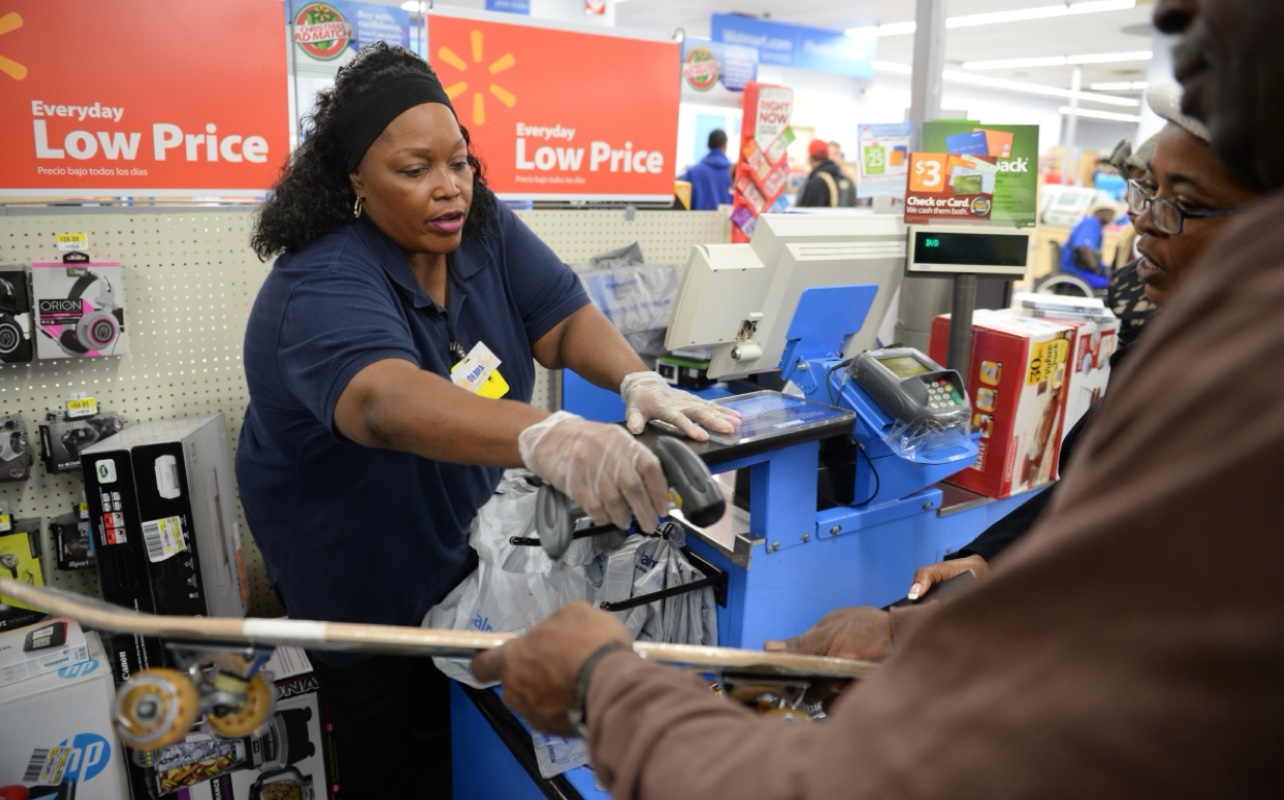
April 23, 2024
More Walmart Locations Say Goodbye To Self-Checkout Lanes Replaced With Staffed Checkout Lanes
This is good news-- More jobs and personal experiences.
Customers at certain Walmart locations will have to get used to staffed checkout lanes, as more stores are eliminating self-checkout options.
Two stores — one in Missouri and one in Ohio — are hoping to improve customers’ in-store experience by eliminating self-checkout lanes. The grocery giant confirmed that construction in the Cleveland Steelyard location and a St. Louis-area Supercenter will take place after hours and will be finalized in close to two weeks.
Based on feedback from customers, employees and the trend of local shopping patterns, spokesperson Brian Little says the move helps the service provided to shoppers.
“We believe the change will improve the in-store shopping experience and give our associates the chance to provide more personalized and efficient service,” he said.
Several of the country’s largest retailers have been reevaluating their self-checkout lanes. According to Fast Company, in February 2024, Target cut back on self-checkout lanes in select stores by reducing the hours of customer usage. Their decision helped combat the “shrink” in the retail industry — the loss of products due to theft.
Dollar General also reversed the trend, removing self-checkout stands in 300 stores with the highest level of shoplifting and merchandise losses. In other stores — 9,000 total — the discount retailer giant converted most or all of its self-checkout registers to regular checkout with cashiers. “We believe these actions have the potential to have a material and positive impact on shrink,” CEO Todd Vasos said.
Three Walmart locations in New Mexico followed the same procedure in 2023.
Researchers also found that self-checkout aisles produce a concept known as “partial shrink,” where inventory is lost because customers do not know how to properly scan and pay for all of the items in their transactions.
Before deciding to remove self-checkout aisles, a number of Walmart stores limited access to self-checkout lanes to users of the company’s Walmart+ or Spark delivery apps. Target changed their policy to a limit of ten or fewer in the self-service lanes, which assisted with making the checkout process twice as fast as when there were no limits.
American-based retailers aren’t the only ones adopting these changes. After a study found retailers in the United States, Britain, and other European countries with self-checkout lanes and apps sustained a loss rate of approximately 4% — more than double the industry average — Booths, a British supermarket chain, removed self-checkout stations in all but two of its 28 locations.